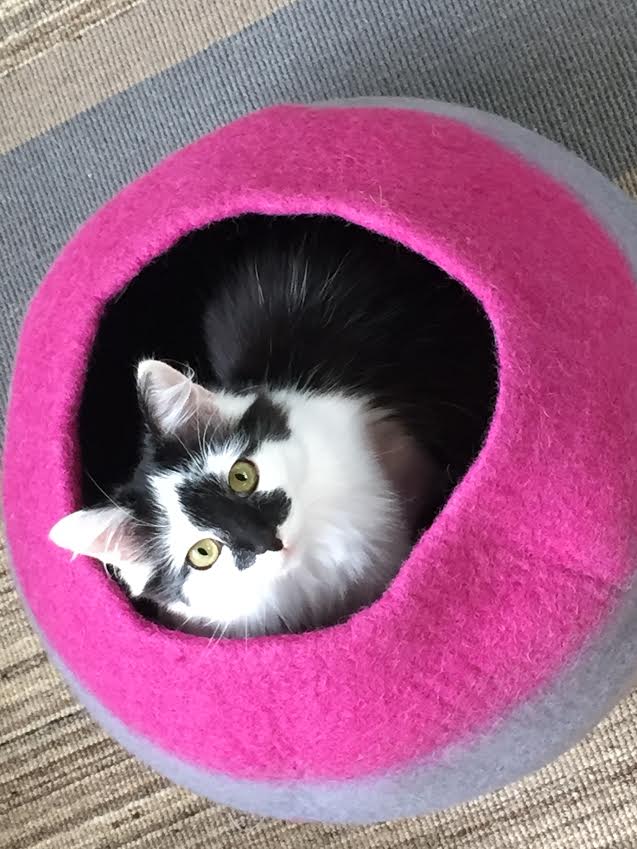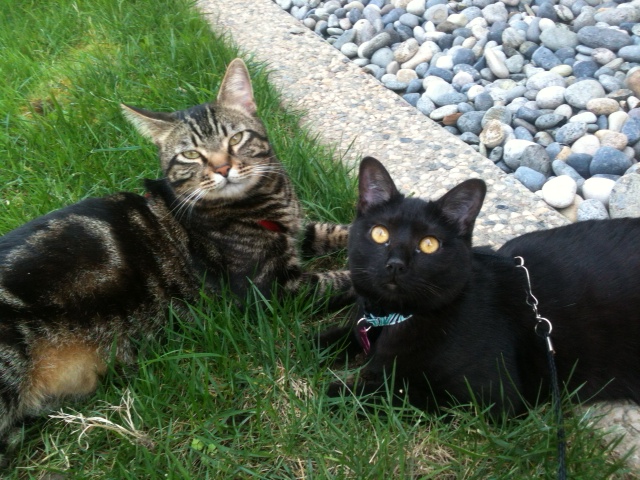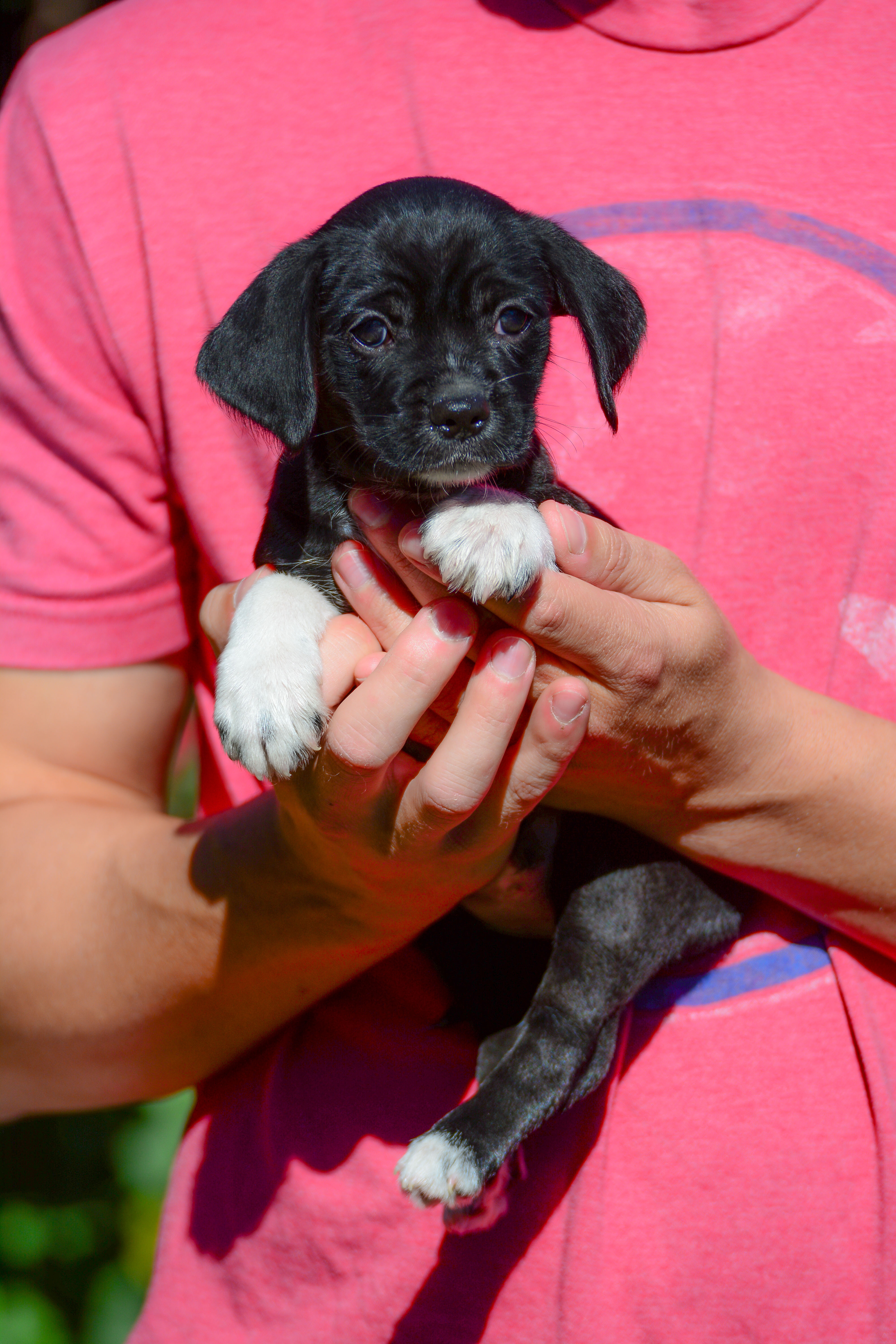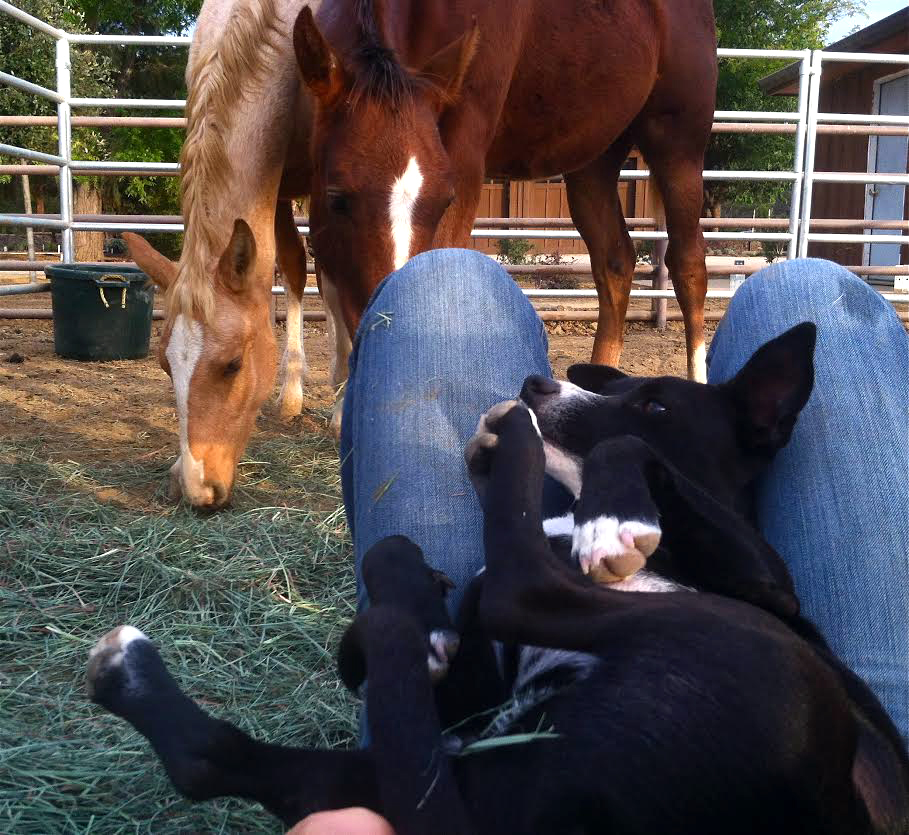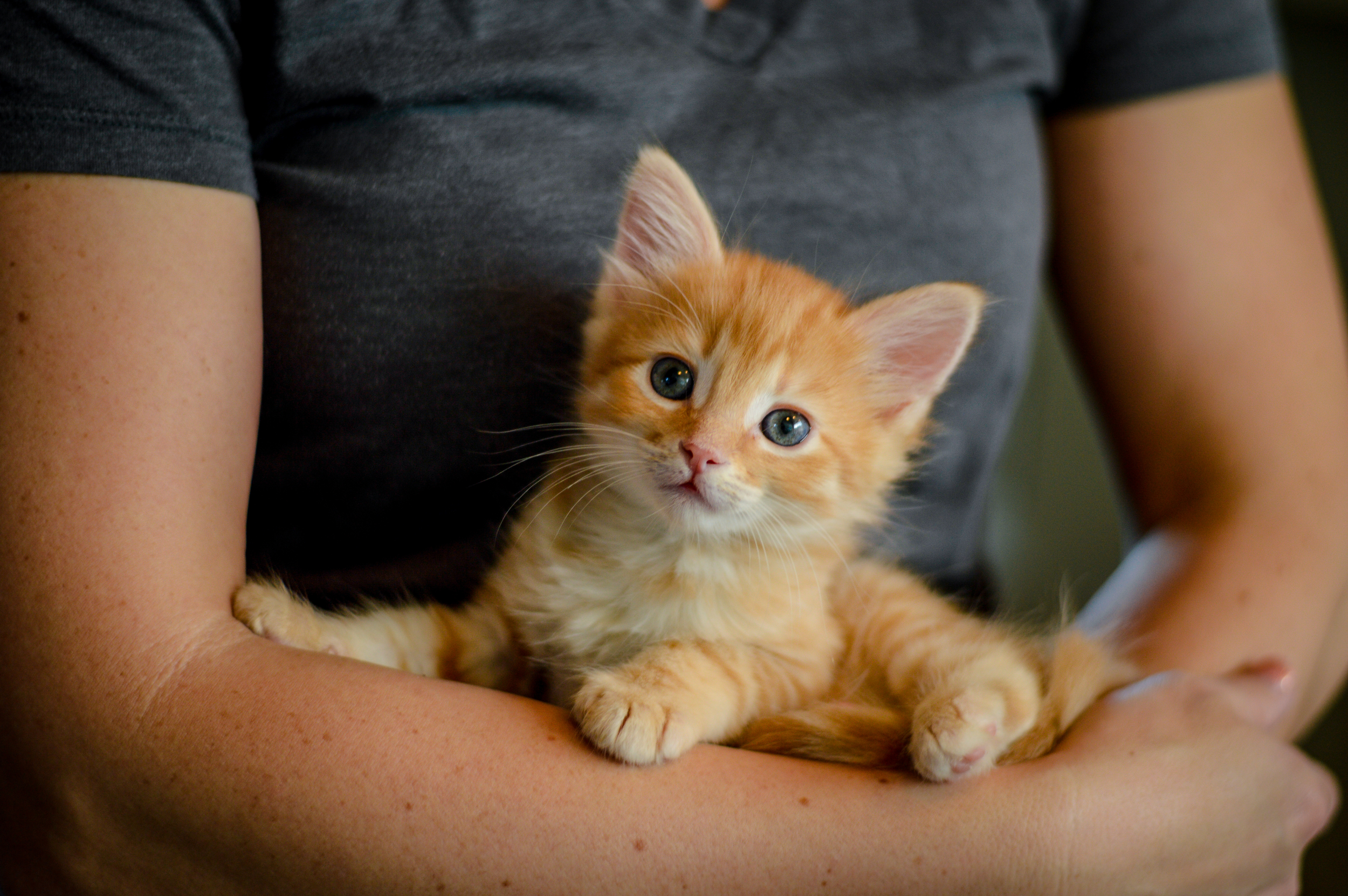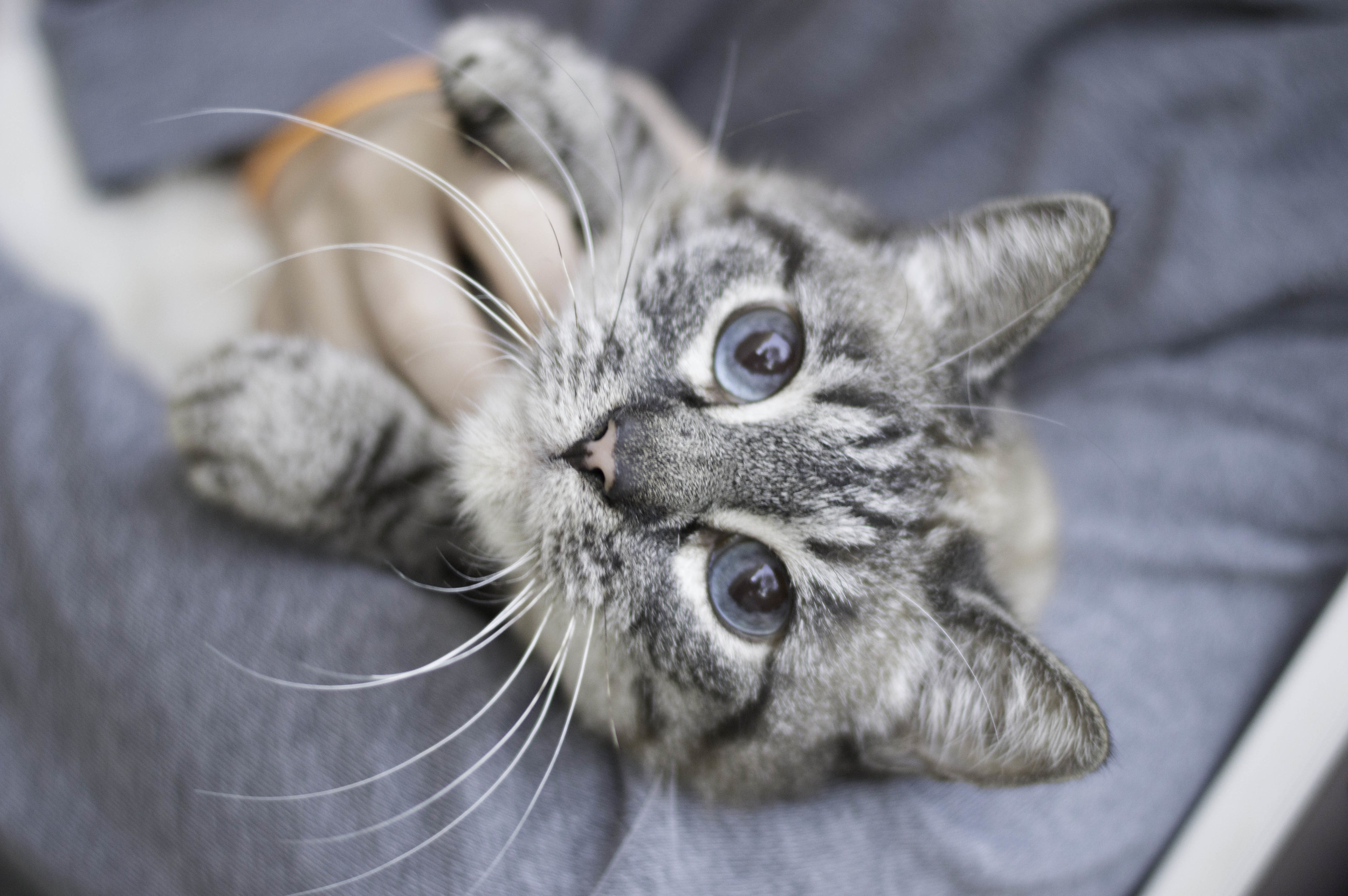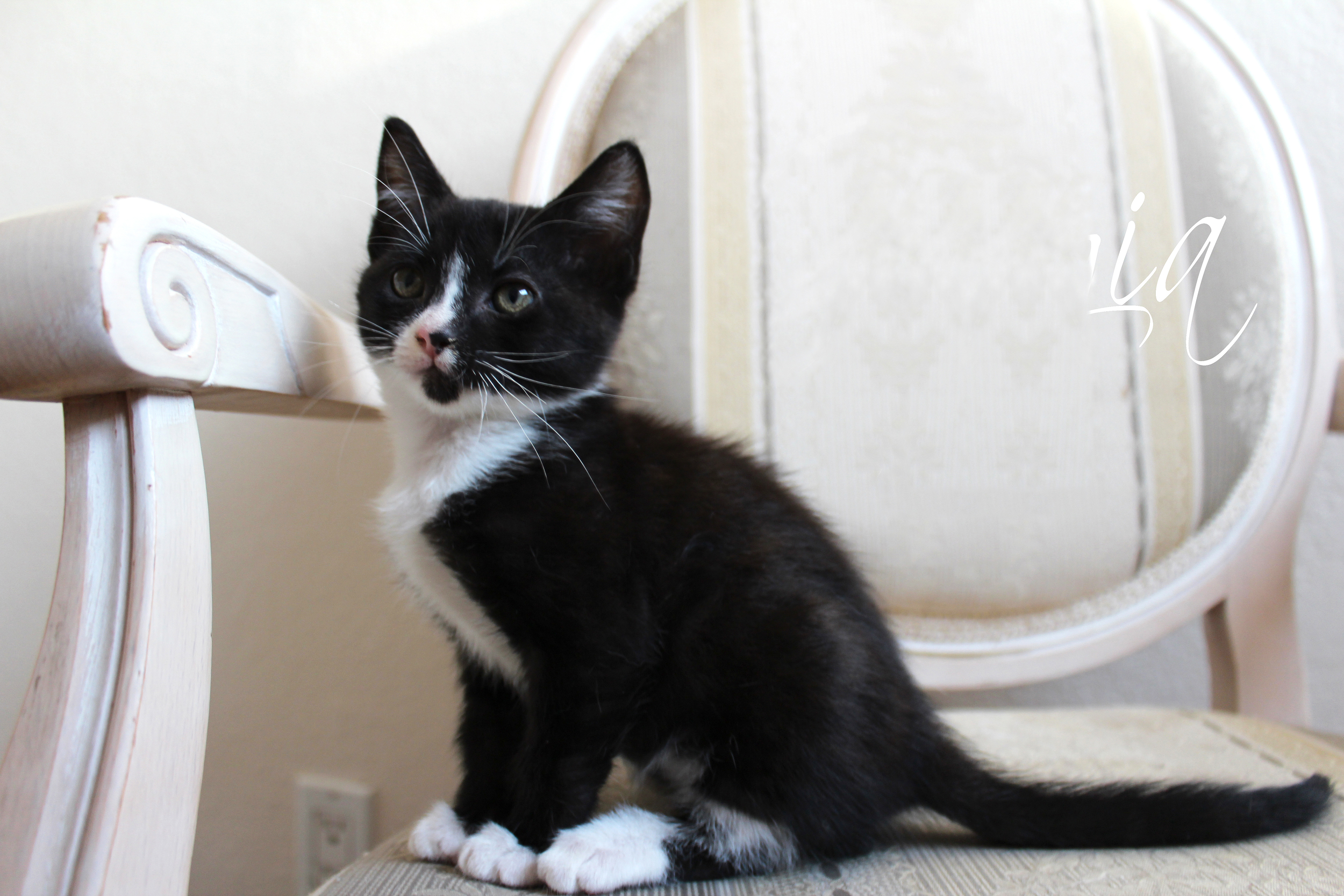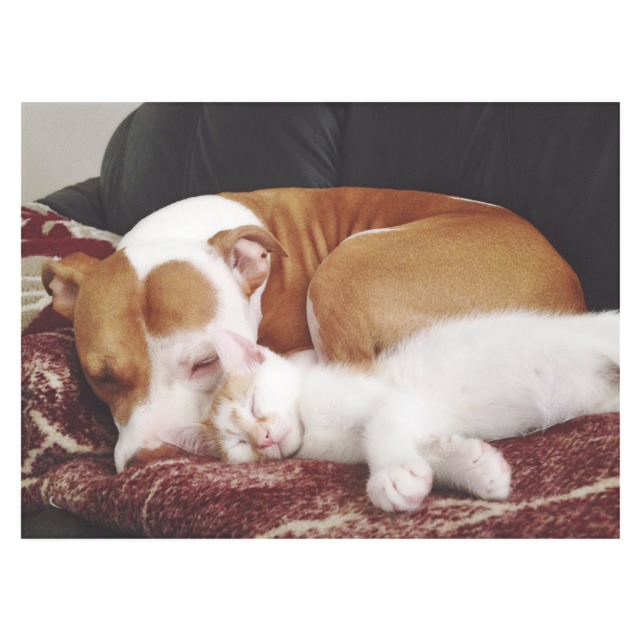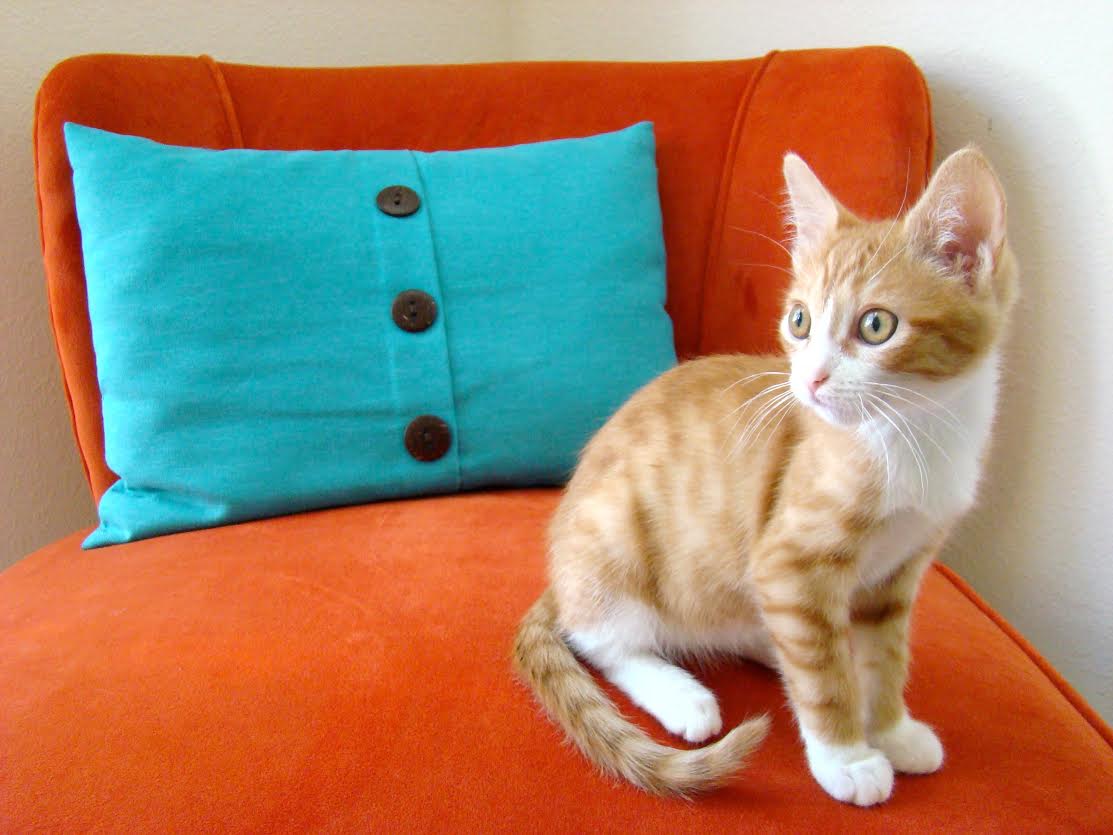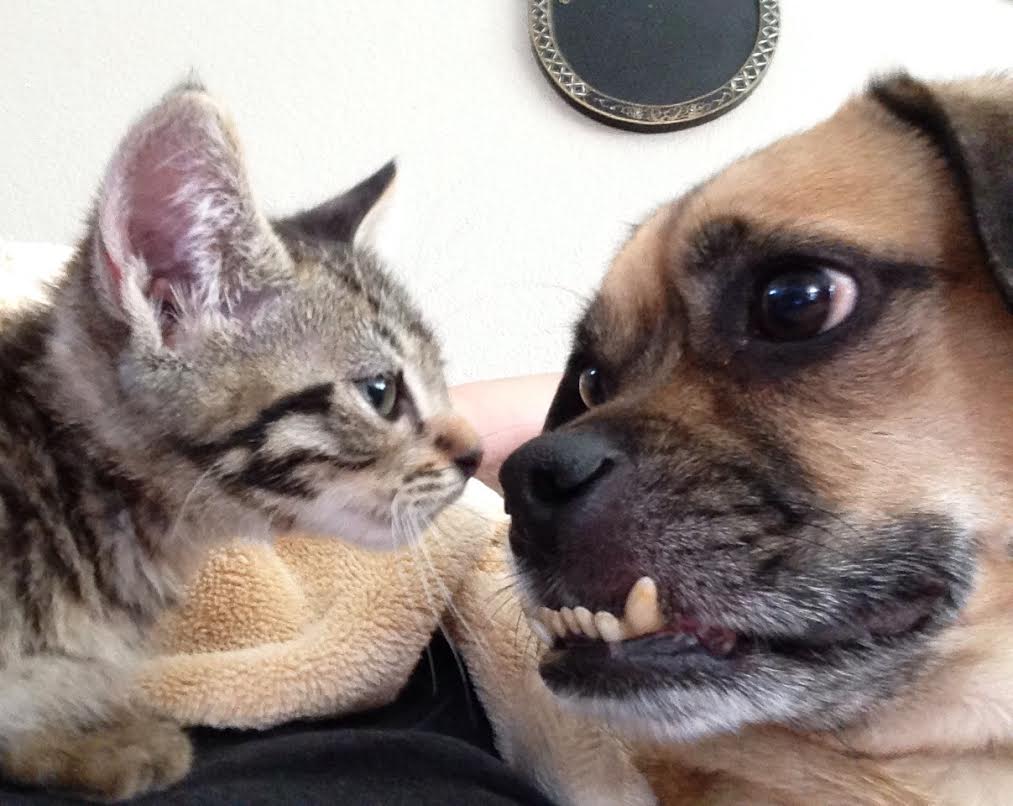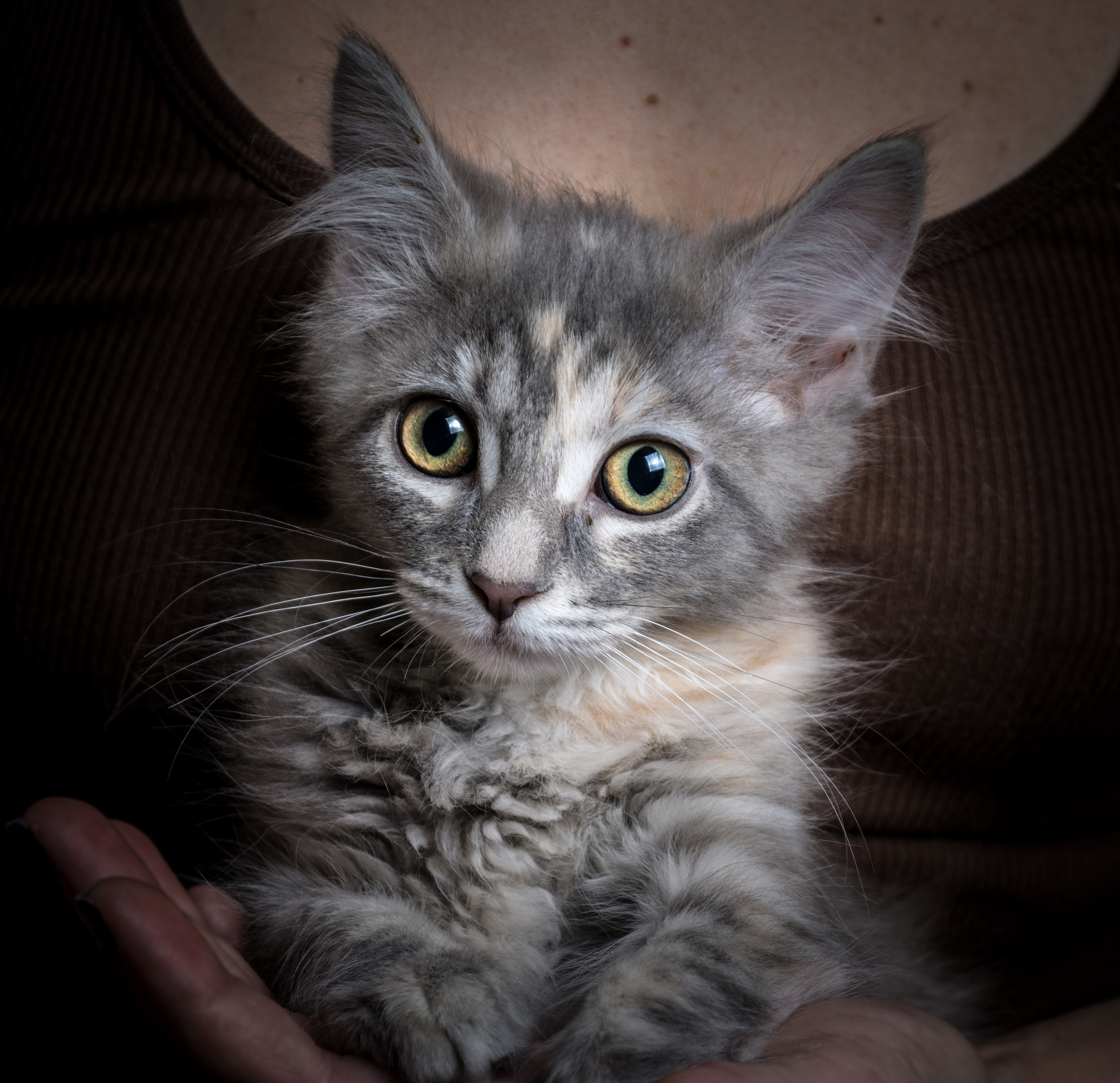You’re adopting a kitten - congratulations! Whether this is your first experience with felines, or if you’ve previously shared your life with them, this will help answer some of your questions and help you prepare. Kittenhood lasts only a few months; they need to learn a lot about life and being a cat in this time and you’ll be there to enjoy watching and help them along. This will be the start of a long, rewarding relationship. To start off on the right paw, here are the essentials for the kitten:
Basic Things Your Kitten Will Need:
A small, quiet and safe space (like a bathroom) where kitten will be initially confined
Litter box, litter & scoop
Cozy sleeping place (this can be the carrier you take kitten home in)
Food dish and water bowl
Toys for solitary play
Interactive toys
Scratching post/cat tree
Cat brush
Claw clippers
Kitten food
Fresh, clean water
Safety collar and I.D. tag
And, the essentials for you are: a camera (kittens are so photogenic!), patience, and a sense of humor.
Introduction to the New Home: All kittens need to be confined to a very small room when they first get to their new home (this could be a bathroom, small office or well ventilated walk-in closet). Confine your new kitten for at least 24 hours (up to several weeks for shyer kittens). This will help them adjust to their new surroundings faster, so they can focus on having fun with YOU! Confinement also helps them with litter box refresher training. They will need food, fresh water, and on the opposite side of the room, a litter box. Kittens and cats love small cozy places, and your new kitten will need a warm, secure spot for naps. While confined (24 hours a day), the human family will visit often, cuddling and playing. Limit the number of family members who interact with the kitten at once, so as not to overwhelm him.
Plan to leave small, quiet toys out for the kitten to play with when he’s alone. Make sure these toys are not so small that a kitten might ingest them and watch for small parts that a kitten might chew off.
When visiting with your new kitten, be sure to always bring along interactive toys - the new kitty will need at least two active playtimes (with you) every single day, probably for all of his or her life.
While the kitten is confined is the perfect time to start her acclimation to your schedule-as much as possible with cats. Have a good long playtime immediately before you go to sleep so the kitten will be tired and more likely to sleep during the night. If the kitten meows at night, unless you feel that it is hurt or ill, ignore it. It can sometimes take days before they learn not to cry at night, and if you go in to visit, it will reinforce the attention seeking behavior.
Finally, until the kitten is self-confident enough to feel at home with everyone in your home and the home itself, confine him to a single room (with litter box, etc.) while you are not there to supervise him.
Cat Carrier: Your kitten will need a sturdy plastic carrier, large enough to give her room even when she is full grown. (A cardboard one will work for a few visits, though.) To get her used to the carrier, leave it out and open in the house, and put a few food treats inside. This will help her associate it with good things, and she will be less fearful of it. When it is necessary to take her to the vet, it is a good idea earlier in the day to entice her into a small room (with few hiding places), like a bathroom, let her settle there, and then take the carrier in there to place her into it. This will prevent having to chase your kitten to try to get her into her carrier.
Kitten proofing & Safety: Kittens, you will find, will play with anything-especially anything they can make move. That means that you will need to check your home out from a kitten’s viewpoint. Any electrical cords or wires should be bundled and hidden, because kittens are tempted to chew on them or pull out plugs. Plastic bags need to be kept away from the kitten (many cats are attracted to these bags and will eat them). Kittens love to play in paper bags, but please cut the handles off first, so the kitten can’t get caught in them. String, yarn, rubber bands and ribbon are dangerous for cats as they will swallow them. The barbs on their tongues make it impossible for them to remove the string from their mouths once swallowed, and this can lead to costly surgery to repair the internal damage and save their lives. Look around for valuable, breakable objects that your kitten might knock over and be prepared to put them well out of reach.
And, finally, while the kitten is still confined, make sure there are no tiny places where he could run if frightened, and hide, and then be difficult to find. Plan to block access to those kinds of spaces, especially behind stoves, refrigerators, etc. Recliner chairs, motors, washers and dryers are very dangerous places that kittens may try to hide in, too. Then there are windows and doors. No matter what you might have heard about cats falling from windows and surviving, that doesn’t happen often. Most do not survive or are very badly injured. Making certain that a kitten cannot insert a paw into the window and push it open, and making certain that you have tight fitting screens in any open window (even if only open an inch!) is very important. Cats should never have access to an open, unprotected window.
Some household plants and flowers are poisonous to cats. There are lists available on the internet. Human medications, many cleaning solutions and anti-freeze are also very poisonous to cats. These must all be put away where the kitten cannot get at them - and they do have agile little paws. You can use cupboard latches used to baby-proof kitchens to keep your kitten away from these items.
Keeping Your Kitten Indoors: Indoor cats live longer, healthier lives than those who are allowed to go outdoors. Cats involved in fights with other cats, dogs, raccoons, or other animals often are badly injured, and require expensive medical care. Additionally, many cats are lost forever, too frightened to find their way home, and may even starve to death. And, although some folks believe it, cats are not “street smart”. A car means little to a cat, and they do not instinctively know to run from one. A cat-proof enclosure in your back yard can allow your cat some safe, outdoors time. Regardless, even in the safest of situations, kittens should never be let outside until over the age of 6 months, and only if they have had all the appropriate shots.
Entertaining: Until your kitten is acclimated and comfortable in the house, large parties, or noisy groups of people will just frighten him. If you do plan a gathering, it is best to confine the kitten to one room, with food, water, litter box and toys, and perhaps bring guests, (a few at a time), to meet him. Holidays are particularly stressful for many cats as are fireworks - your kitten might want to hide then.
Socialization: Kittens are very tiny, and even though very active and athletic, they are fragile! That means, handle with care, but definitely handle them! The more consistent, gentle petting they receive, the more social they will become. Plan to spend two or three sessions every day handling and petting your kitten, even talking to him or her-most cats and kittens respond to quiet talk. Gentle petting all over their bodies (including the ears and mouth) will help them feel comfortable when the veterinarian needs to exam them. Likewise, massaging toes and paws will make them more at ease when claw-clipping time comes. Like human babies, kittens need lots of nap time, so do not bother them when they’re sleeping, but let them get their rest. If your kitten is squirming when you pick her up, do not force her to be held. Instead, let them continue to explore when they start to squirm - just plan to have more frequent, brief cuddle sessions. Make sure to support the kitten completely if you are picking it up, one hand under the front part of the body, and the other arm should be around the back end of the cat so their bottom and back legs are well-supported and not dangling. If you do not support the hind end of a cat when you lift it, the cat will be uncomfortable and will squirm to get down. Do not allow anyone to “over-pet” the kitten-especially on tummies and back -the kitten may respond by nipping or swatting. Sometimes this is called “over-stimulation”. Being handled too much in these sensitive areas can be very uncomfortable for the kitten and is often perceived as being threatening. And, no one wants to have their kitten get in the habit of nipping or of having a kitten who is frightened of human hands.
Ideally, when you have quiet guests visit, introduce them to the kitten -getting to know a lot of people will help the kitty understand that visitors are okay. But, again, don’t force the issue. Luring the kitten to interact with a toy on a wand or stick, and letting the kitten come to the guests is the best plan. Exposing the kitten to both men and women is a good idea, too, as some kittens become fearful around people who are larger, or have deeper voices, or a higher pitched voice, due to lack of exposure to different people. These socialization times will have a long term impact on both the kitten and the family. Kittens need a lot of affection and interaction from their family.
Parents must be willing to supervise children’s interaction with the kitten and teach them how to safely, respectfully and appropriately handle the kitten.
Playtime: Kitten playtime looks like just that-play. It is actually training for the hunting skills that are so natural to most cats: pouncing, running, stalking, ambushing and climbing. It is for this reason that they so enjoy bird-like or rodent-like toys-they think they are going after prey. Each play session should last 15-20 minutes - or longer for the very athletic kitties. All cats and kittens like play, but some need more than others. Kittens generally need lots of interactive playtime and will continue to need play as they grow into adults. Cats who live in a multi-cat home with other cats close to their own age and energy level that they can play with, will require less interactive play time from their human family members. It is essential that you never play with the kitten with your hands or “roughhouse” with the kitten. This includes wiggling fingers to entice the kitten to attack or wrestling with her. Also, holding a small mouse or ball type toy in your hand and wiggling that can also lead the kitten to think your hand is a toy. Cats need to understand that hands are for gentle petting, and only toys are for playtime. A grown cat who hasn’t learned to differentiate between toys and hands will not be a gentle companion. With consistent treatment from everyone the kitten will learn to trust humans and you’ll all enjoy his playtime. If you have been playing with interactive toys that have strings (etc), remember to take the toy with you when not playing. Toys with strings or other moving parts can be dangerous if the cat is left alone with it, because they may try to eat them. Also plan to purchase (or make!) a variety of interactive toys- like humans, cats get bored with the same old thing. Kittens who do not have the stimulation of playtime and petting will likely be shy and withdrawn and never develop their complete personalities. Even though they are so small, kittens are nearly as agile as adult cats, and will do amazing things going after toys.
Although they are likely to be most active in the morning and evening, you will probably hear a lot of midnight madness, too. Kittens sleep a lot, and they need it, but they may well tear around the house at night, attacking imaginary foes. This is normal kitten behavior, and not something to be concerned about. Again, a lengthy play session before bedtime may help with this behavior.
Positive Reinforcement: Punishment never works with cats - they are busy being cats and kittens-their behavior is cat behavior, not human behavior. That’s what makes them such fun! They do not understand being punished for just being themselves.
Punishment will cause them to be fearful and neurotic, and possibly lead to aggressive behaviors such as swatting and biting. Yelling at a kitten or chasing it will further terrify her. Using positive reinforcement for good behavior is far more likely to have the desired effect. If a kitten nips or swats, it is best to just stop whatever is going on at the time and say “no” or “ouch” in a high pitched voice – just enough to startle the kitten. Then after a 15 second “time-out” during which you remove yourself from the cats presence (you don’t need to put the cat in a time-out, you move away from the cat which achieves the same effect), you can allow some playtime with an interactive toy. Keep in mind that if the reward (more playtime!) comes too soon, kitty may misunderstand the lesson and think that swatting you gets you to play. Make sure the reward follows “good” behavior, when kitty is enjoying its own space and not playing too rough with people.
Litter box: It is best to have at least one litter box per cat, and ideally one extra. We suggest regular unscented clay litter. For particularly small kittens, a box with lower sides may be necessary, at least until they grow a bit more, so they can climb in easily. Veterinarians recommend not using clumping litter for kittens, as they tend to ingest too much of it when grooming themselves, which can cause a deadly intestinal blockage. Keep the litter box immaculately clean, and in a safe, quiet spot where the kitten will have privacy. Many litter box problems occur because the cat does not feel safe using the box or the litter box is not kept clean enough. Start off right away by keeping the kitten’s “bathroom” immaculate. If the kitten does not use the litterbox all the time, make sure to request our Litterbox Basics handout so you can troubleshoot and get your kitten back on track.
Cat Tree or Scratching Post: All cats need to scratch, as it keeps their muscles and claws in shape and is a stress releaser. We recommend that you purchase (or make!) a cat tree or scratching post. It needs to be tall enough and heavy enough that they can grow into it – so that when an adult cat stretches full length it cannot knock the post over. Many cats have a preference as far as texture goes: cat trees with both sisal rope and carpeting can help satisfy your kitten’s needs. You will need to encourage your kitten to scratch on its scratching post. See handout Paws and Claws for more info!
Claw Clipping: Cats’ claws need to be clipped regularly. We recommend you use a clipper designed for that purpose, they are available at pet supply stores. Routinely clipping claws on your kitten will help him be more accepting of it as he grows up. See handout Paws and Claws for more info!
Grooming: Even though they are known to be very clean and tidy animals, cats do have a lot of fur, and they will shed. Brushing and combing are excellent ways to bond with your kitten as well as keeping all that fur under control. Many cats can’t keep up with their own grooming, and brushing will help eliminate fur balls. Brushing shorthaired cats can be done occasionally, but brushing longhaired cats is ESSENTIAL, to keep them from getting painfully matted. If longhaired cats are allowed to get matted these matts pull at their skin and can cause sores and hair loss. Soft to medium bristle brushes are best, and again, starting while they are young, and grooming them regularly is best. Many cats enjoy being brushed, but you might need to make this more fun by giving a treat when grooming.
Food and Water: Each cat in the household needs its own food dish, and some will be willing to share water bowls. Be aware of how much food your kitten eats as it is essential that they eat well – they are growing a lot at this point in their lives! Discuss any feeding issues with your veterinarian. If you have multiple cats it is best to separate their food dishes by at least 18”. Since a kitten will need to be fed kitten food, adults and kittens should be fed separately. And, no milk. Cats don’t need it, and in fact many cats are made ill by drinking it.
Multi-Cat Households: If there are other cats in the household, a slow introduction is very important. Keep in mind the size difference between the kitten and any adult cats. They might enjoy playing together, but the larger cat might inadvertently injure the kitten so they need to be watched carefully. Don’t be surprised to see your kitten become the more dominant kitty in the household as he or she grows older, bigger and stronger. Make sure to review the Cat-to-Cat Introduction document for more introduction tips and a detailed introduction timeline.
And finally…
Have a wonderful, long life with your new companion. You will find that sharing your life with a cat is a never ending source of unconditional love and wonder. Cats will continue to surprise and delight us all of their lives. They give so much back in return for the care we give them! Enjoy your little tiger - who in most ways is just a very tiny version of his very large wild relatives.
Source: SF SPCA with some edits made by Tailchaser Rescue




